Set Up a Wristband Application
Learn how to setup a Wristband application for the purpose of this quickstart guide.
The first step in using Wristband is to create an application. Applications sit at the top of Wristband’s entity hierarchy, and all other entities, such as tenants, users, and OAuth2 clients, exist within the context of an application.
Create a New Application
When you log in to Wristband, you'll land on the Dashboard Home Page. To create an application, do the following:
- Click the "Add Application" button.
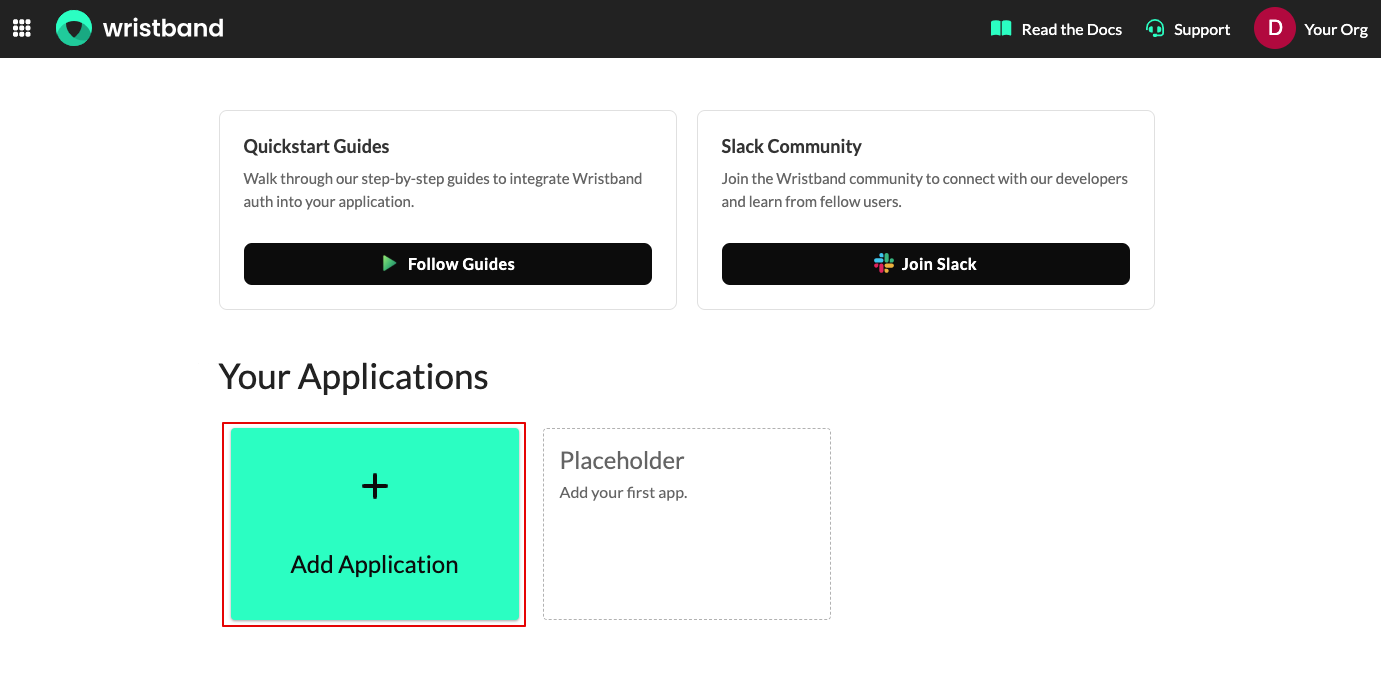
- In the modal that pops up, select the "Quickstart" option, then click the "Continue" button.
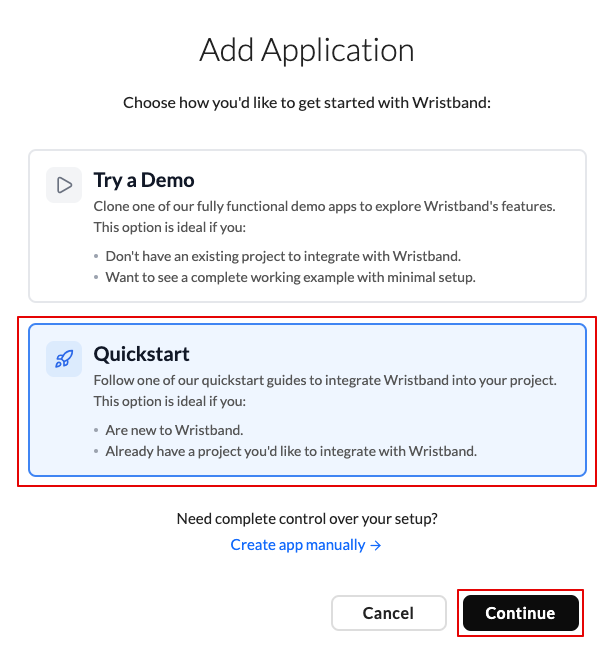
- Next, select the web framework you're using to build your application, then click the "Continue" button.
Note
You can use popular frontend frameworks (i.e. React, Vue, etc.) alongside the web framework selected from the list. Instructions for setting up your frontend will be provided later in the quickstart guide.
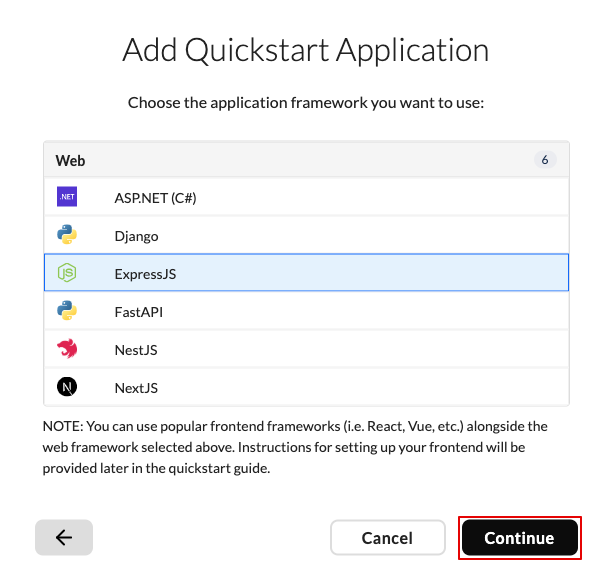
- On the next screen, enter a name for your application, then click "Continue".
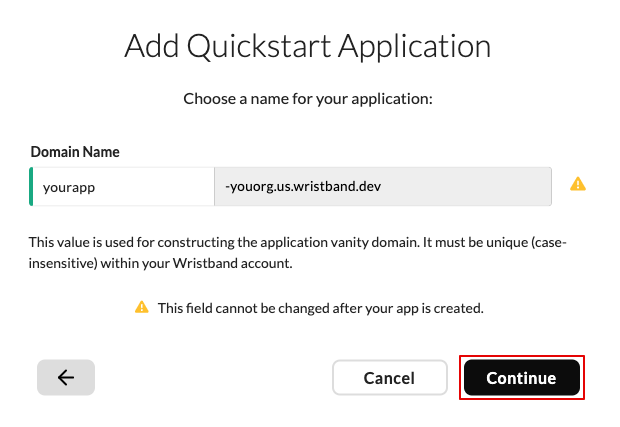
- On the summary screen, click the "Create" button.
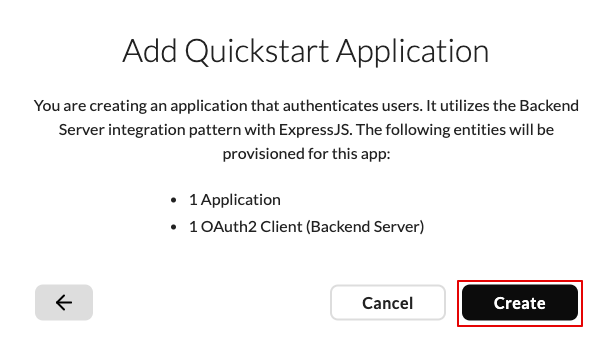
- After the application is created, you’ll see a screen displaying environment variables needed in later steps to configure the Wristband SDK. Make sure to copy these values. Then, click the link at the top of the screen to open a framework-specific guide for integrating your project with your Wristband application. Follow the steps in this guide to complete the integration process. You can also click the "Done" button to close the modal.
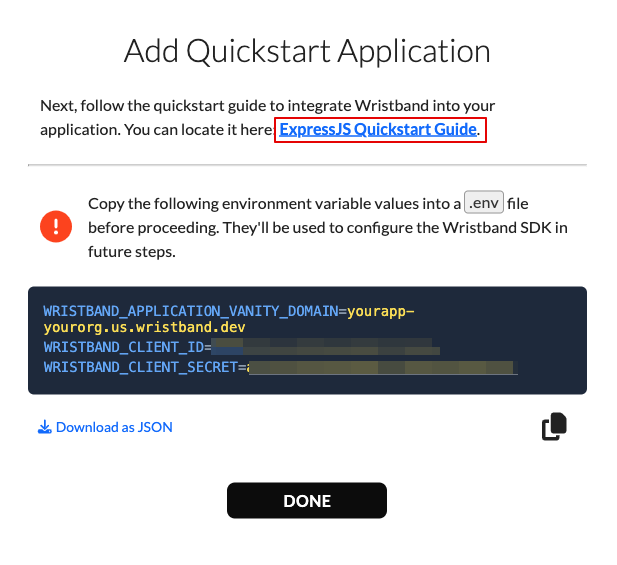
Manually Retrieving SDK Configuration Values
NoteThis section is not required to complete the quickstart. Its main purpose is to server as a reference in case you lose the configuration values shown at the end of the Add Quickstart Application modal.
In the last step of the Add Quickstart Application modal, a screen is displayed showing the following three environment variables, which are required to configure the Wristband SDK:
- WRISTBAND_APPLICATION_VANITY_DOMAIN
- WRISTBAND_CLIENT_ID
- WRISTBAND_CLIENT_SECRET
If you lose any of these values, you can retrieve them manually from the Wristband dashboard. Instructions for retrieving each environment variable are provided below.
-
WRISTBAND_APPLICATION_VANITY_DOMAIN - This is the vanity domain of your application. To find this value, select your application from the Dashboard Home Page. On the Application Settings page, you'll see the Application Vanity Domain field in the top info box.

-
WRISTBAND_CLIENT_ID - This is the ID of the OAuth2 client created during application provisioning. To find this value, select your application from the Dashboard Home Page. In the left navigation bar, select "OAuth2 Clients" and then select the client you created earlier. The client ID will be present in the top info box.

-
WRISTBAND_CLIENT_SECRET - This is the OAuth2 client secret created during application provisioning. The client's secret can only be viewed when the client is first created. If you don't remember the secret initially generated for the client, you can rotate it to create a new one. To rotate the client's secret, select "OAuth2 Clients" from the left navigation bar, and then select the client whose secret you'd like to rotate. On the Edit Client page, scroll down to the Client Secret Settings section and then select the "Rotate" button. Your client's new secret will be presented in a modal.

Updated 10 days ago
Now that your Wristband application is created, refer to one of the framework-specific quickstart guides to complete the integration.